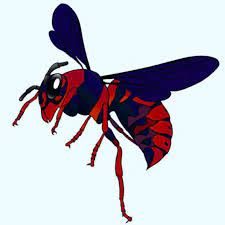by Kyle McMeans
Sports are always the activities we looked forward to as kids. It was a time for us to hang with
our friends, learn about the sports we were playing, and play our best to try and beat the other
team. Coaches always wanted the athlete to be happy and did not mentally go after players.
Injuries are not as common in the younger generation, but as you grow older mental and physical
setbacks begin.
In high school, I was faced with some mental and physical injuries. When I first got injured, I
was physically unable to continue playing baseball, the sport I loved. This then led me to do
anything I could to get back on the field, so I started physical therapy. During the 9 months I was
in therapy, I began to suffer from depression. With what I was being told, I saw no positive
outcome coming out of going to therapy three times a week for 2 to 3 hours a day. I was
beginning to be mentally drained and just wanted to give up. My recovery experience was a
rollercoaster. Working with my physical therapist to try and heal my injury and mentally pushing
myself to keep moving forward was the hardest task. During physical therapy, I had to do many
different types of exercises. They consisted of strengthening my lower back, hip, and core. Now
looking into the future, present day, I am living a different life than I was then. I am now able to
relax and find ways to complete any task I put myself through, and even if the outcome is
not what I want, I still know that I showed what I can do and that is always an accomplishment.
In the world now, there are many athletes who struggle with mental health whether it be from
physical injury or mental illness, In the sports world today, there are people everywhere who are
struggling. Some signs and symptoms that should be looked for in athletes are sadness, excessive
fears, tiredness, and withdrawal from groups such as friends. Treatments for mental illness do
not come in bundles as we only have one main way to help athletes, which is through therapy.
Mental health is something that you cannot see and people find an effortless way to always hide
it (Smith 2015). Mental health in athletes also seems to be on the increase and does not show any
sign of slowing down, it is known that 17 percent of athletes now have significant depression,
which is now up from 8 percent from past college athletes (Carolla 2013). Any person or athlete
can suffer from mental illness as anyone can be challenged with physical injuries or situations
that cause mental illness, “One of the things that surprised me, when I disclosed my diagnosis,
immediately – I’m talking about hours later – other players and executives from around the sport
started calling me and asking for help” (Smith 2015).
Athlete 365, also known as the Olympics, is an organization that is trying to make a change and
help athletes. Their mission is to be there for athletes who need it and to help prevent mental
illness or help the athlete, “The Mentally Fit Helpline is a free and confidential mental health and
well-being support service available to all Olympians and Paralympians at Games-
time”(Olympics). Their goal is to help reach out to athletes or have athletes reach out to them.
They want athletes to know that there is someone out there that is willing to help them. They are
there to help anyone who is going through a rough time. They are trusted workers who are
around athletes 24/7 and are trained professionals.
It is important for athletes to know that they have a place to go. Once it is known around the
world, more organizations can be created to help decrease the number of athletes with mental
illness. With mental illness beginning to show in the younger generation, such as high school,
educating them to know that there are people there to help will help spread awareness and help
catch “red flag” symptoms in the first stages. Some other calls to action that we can make happen
are, having athletes themselves talk about what they had to do to get to where they are now, have
athletes be the “workers” and talk to ones who need help and have online classes that anyone can
join so that they can learn methods used by past diagnosed athletes.
For our future athletes to be their best and do their best, action needs to be taken now. Many see
that some sports are starting to diminish in participants. To keep our younger generation
involved in their communities, we need to find a way to let them know that there are people here
who want to help them and create a brighter future for athletes. Whether it be a 12-year-old
athlete who is struggling with their coach or a 22-year-old athlete who is struggling with the
amount of mental stress and wear and tear on their body, each matter to the sports world and
deserve to be helped and have someone to walk them through.
References:
Athlete 365(Olympics) https://olympics.com/athlete365/mentally-fit/
NAMI (National Alliance of Mental Illness) https://nami.org/home

